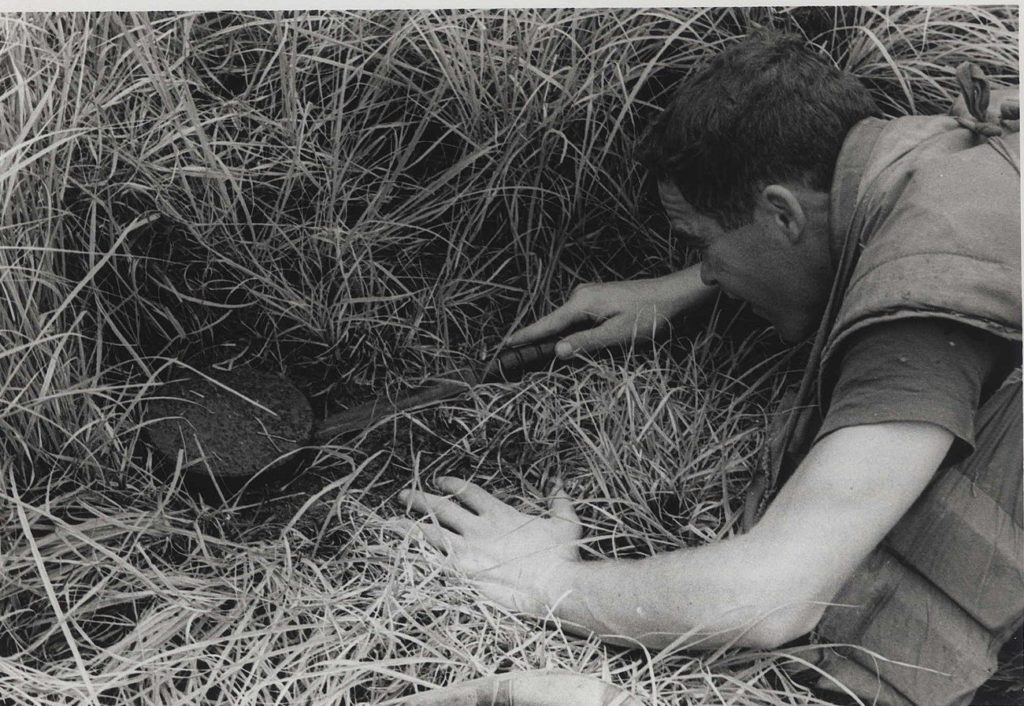In these uncertain times, you might catch yourself thinking more often about how to defend your property. Maybe you’re considering a video camera, better locks, or a firearm. Or perhaps you’ve found yourself googling, “are booby traps illegal?”
Sure, movies like Skyfall, Home Alone, and A Nightmare on Elm Street depict people coming up with devious devices to hurt unwanted guests in their homes. But in reality, such booby traps are a legal nightmare, even in places with strong self defense laws. Even more importantly, a booby trap is as likely to hurt you, your family, or innocent bystanders as it is to hurt the intended target.
Unlike Harry and Marv in the Home Alone movies, real people don’t often survive getting hit in the head with pipes and paint buckets, electrocution, and being set on fire. Actual human beings will be horribly mangled, and the law isn’t sympathetic to such cruelty. Besides, the real-life Kevin McCallister used a simple AR-15 to deal with his burglar problem.
Here’s what you need to know:
- Courts have a long history of siding against booby trap users.
- Booby traps are a threat to children and first responders.
- If someone is hurt or killed by a booby trap you set, you will likely be found liable.
Are booby traps illegal?
The short version is: the law does not approve of booby traps. If you set one and someone gets hurt or killed by it, you will likely be held criminally and/or civilly liable. One lawyer we spoke to, Stephen J. Newman, a partner at Stroock & Stroock & Lavan LLP in Los Angeles, put it even more bluntly. “DO NOT DO THIS!!!” he said via email (caps and emphasis his own).
You might think that’s unfair. After all, it’s your house, right? Do you not have a right to defend life and property? Is it not your right to set traps in your own house if you wish, especially if they’re triggered by someone with no right to be there? But once you see the legal reasoning, it’ll probably make more sense.
Written law around booby traps is vague. As far as we know, there is not a federal law against them. Nor are there usually state laws about them, although the use of booby traps is a Class D felony in Arkansas.
Presumably, booby trap usage is rare enough that legislators don’t bother with it. However, there is a rich set of case law surrounding booby traps.
Let’s take a minute to explain the concept of case law in case you’re unfamiliar with it (pun not intended). Basically, if a judge is presiding over a case, and the law surrounding it is vague or nonexistent, the judge will likely look to see how other courts have ruled on similar cases. This sort of informal legal system is known as “case law” or “common law” and is not just a normal practice, but a very old one. Since our legal system is a spinoff of the British one, judges will even sometimes look back at ancient British rulings for guidance.
In other words, if you get in trouble for using a booby trap, the judge is going to look at past cases to decide what to do with you. And based on those cases, you’d probably be in trouble.

Legal cases show household traps are ill-advised
We reached out to a few lawyers: Stephen J. Newman mentioned above; Erik K. Jacobs of Cicero, France & Alexander in Rockford, Illinois; David Reischer of LegalAdvice.com, and Nicholas A. Battaglia, a licensed attorney in New York and New Jersey. All were in agreement that booby traps are a terrible idea in the eyes of the law, and two cases came up repeatedly: Katko v. Briney and People v. Ceballos.
Katko v. Briney
The most famous case about booby traps is Katko v. Briney. Every law school student studies it, and I even studied it in journalism school.
In the early 1970s, Edward and Bertha Briney owned an old, abandoned farmhouse in Iowa. The house was boarded up and the couple had placed several “No Trespassing” signs outside. Despite that, the house was frequently broken into. So Edward Briney rigged a 20-gauge shotgun to fire whenever a certain bedroom door was opened in the house.
Marvin Katko entered the house to steal fruit jars and opened the booby-trapped door. The shotgun blasted his legs and put Katko in the hospital. He filed a lawsuit, Katko v. Briney, and won a $30,000 settlement (which would be about $194,000 in 2020 dollars).
Edward Briney was later asked if he’d do anything different, and he said he’d have aimed the gun a few feet higher.
People v. Ceballos applied to Philip Connaghan
There was another very similar case around the same time as Katko, People v Ceballos. Don Ceballos rigged a .22-caliber pistol in his garage. A teenage boy tried to break into the garage and got shot in the face. Ceballos was convicted of assault with a deadly weapon.
Years after both Katko and Ceballos was the tragic story of Denver handyman Philip Connaghan, who reported so many break-ins to the police that the detectives eventually asked him to periodically mail in lists of stolen items. People even donated new tools to him, and those were also stolen. The police sat on their hands and did nothing, so Connaghan took the law into his own hands. He rigged a double-barreled shotgun to a trip-wire, and even spray-painted a warning on the door.
While Connaghan was on vacation, the shotgun killed a 19-year-old who was trying to break in. Connaghan received tremendous support from the Denver community, which might account for his lenient sentence. Connaghan was sentenced to just six years of probation and $9,500 in fines for manslaugther.

Bottom line: don’t get caught in your own trap
The law does not look kindly upon booby traps, for a few reasons:
- The law generally considers life more valuable than property (Katko)
- A child or other innocent trespasser could be hurt by such a trap (Katko)
- Even if you have the right to protect your home with deadly force, a mechanical device is “without mercy or discrection”. (Ceballos). The ruling in Ceballos stated, “They deal death and destruction to the innocent as well as the criminal intruder without the slightest warning.”
- Booby traps are a threat to first responders like police and firefighters. (Ceballos)
That last one is a particular sticking point. Cops and firefighters pushed for harsh sentencing in the Connaghan case because his actions could have posed a threat to them.
But regardless, the above points aren’t just legalisms. They’re actually good arguments for why you shouldn’t use booby traps at all. However, they leave out another reason to not deploy booby traps, and that is: they could very easily hurt you instead of the intended target. Even if they’re somehow expressly legal where you live (doubtful), we can’t responsibly recommend them.

You are reporting the comment """ by on